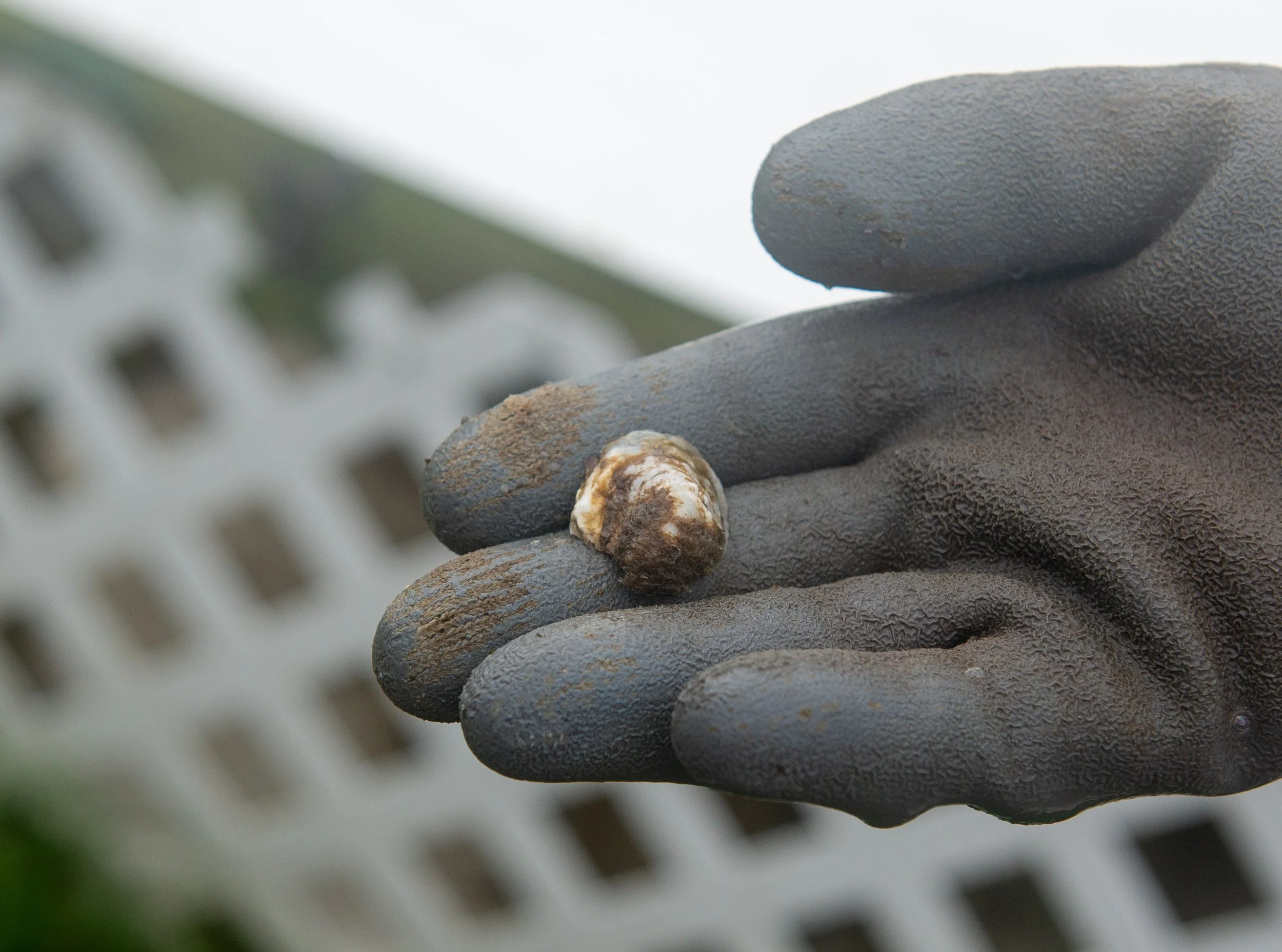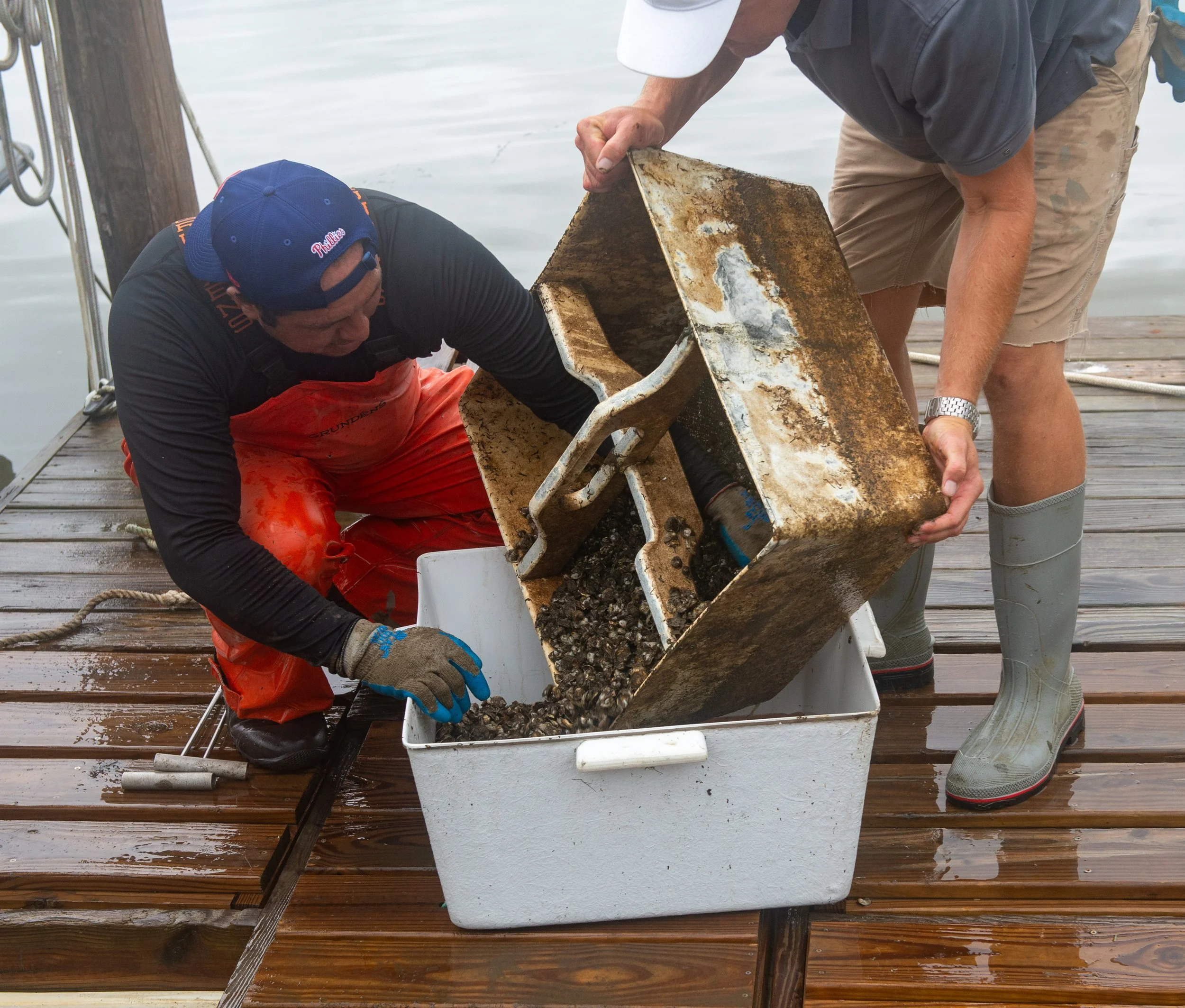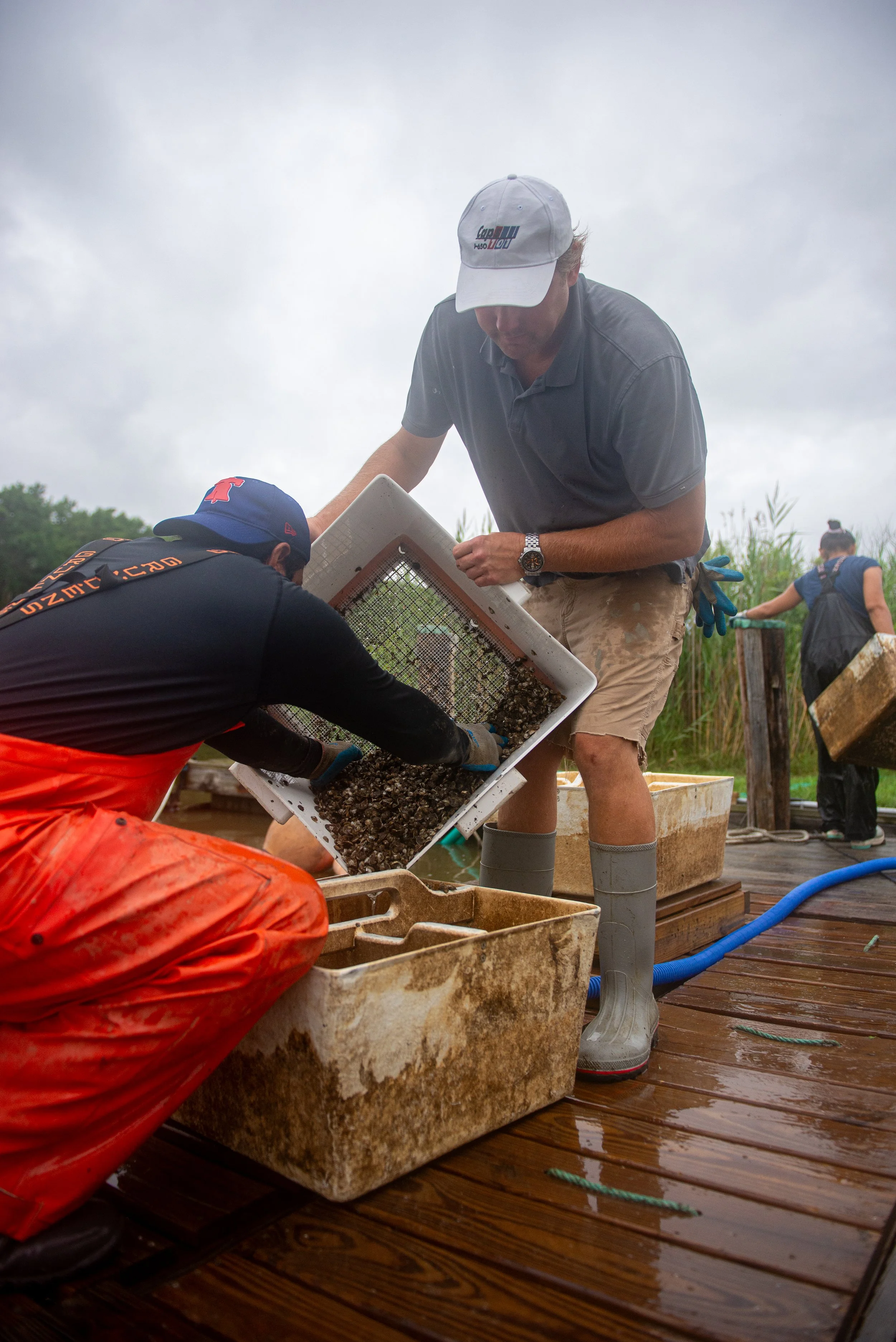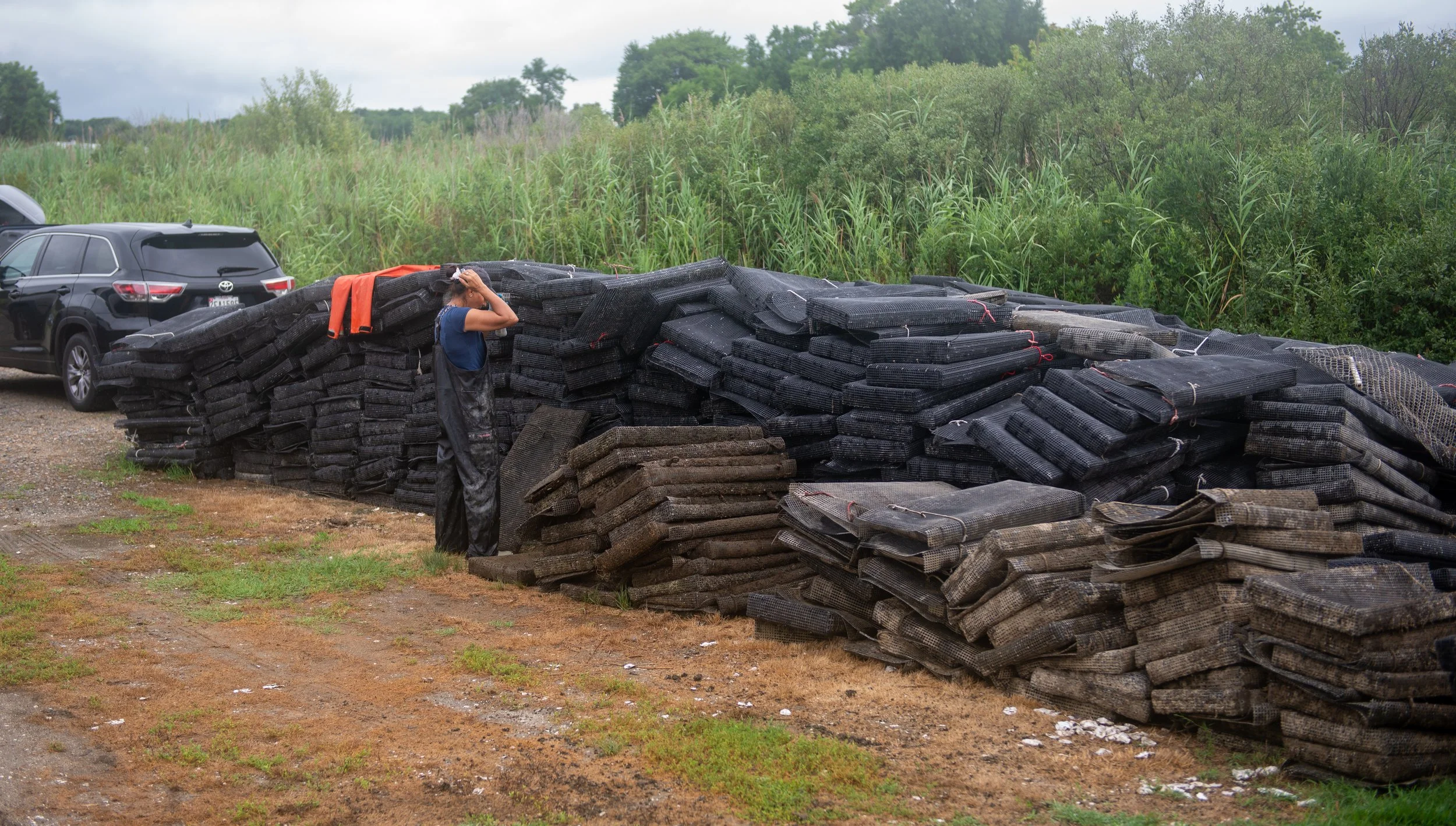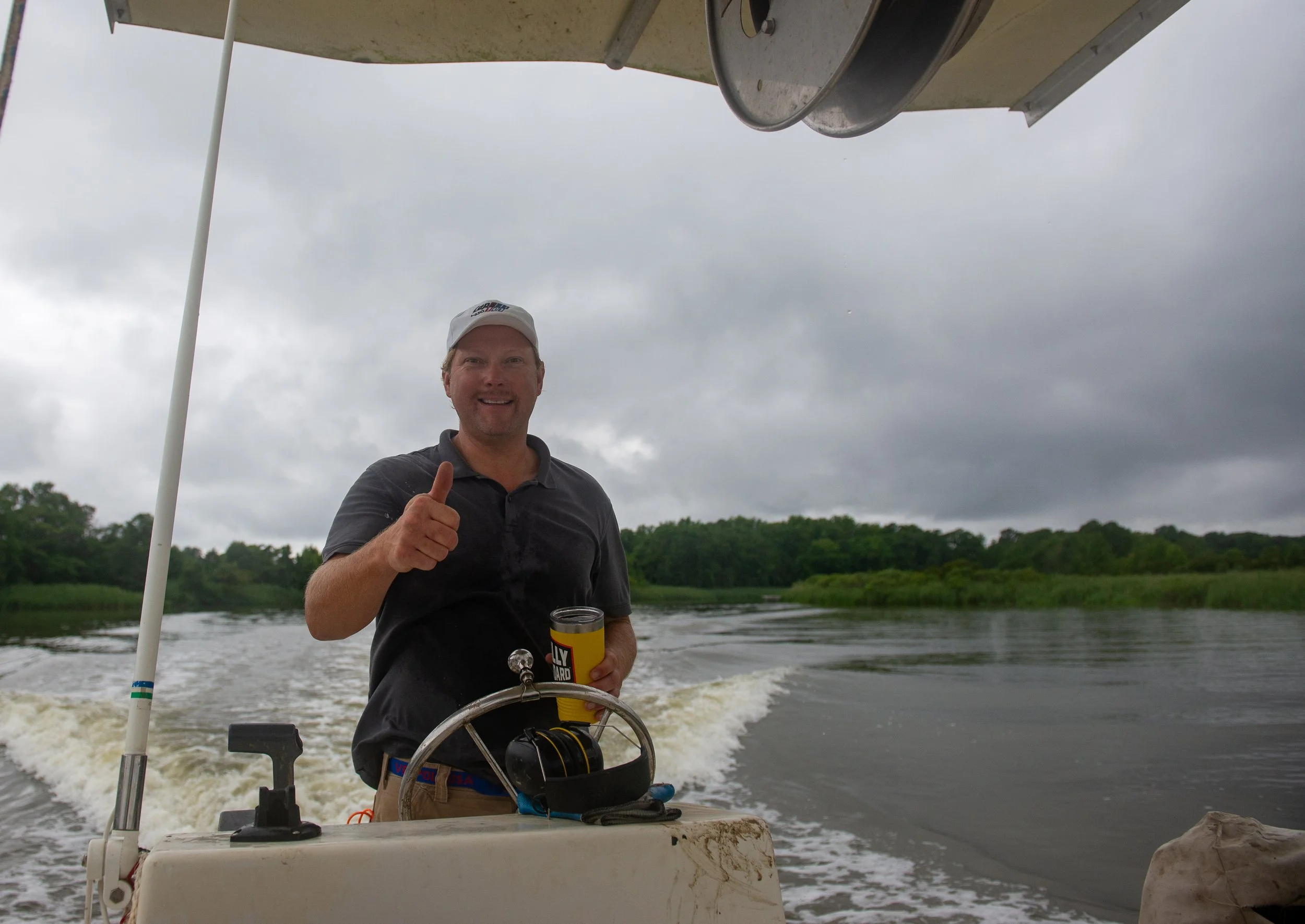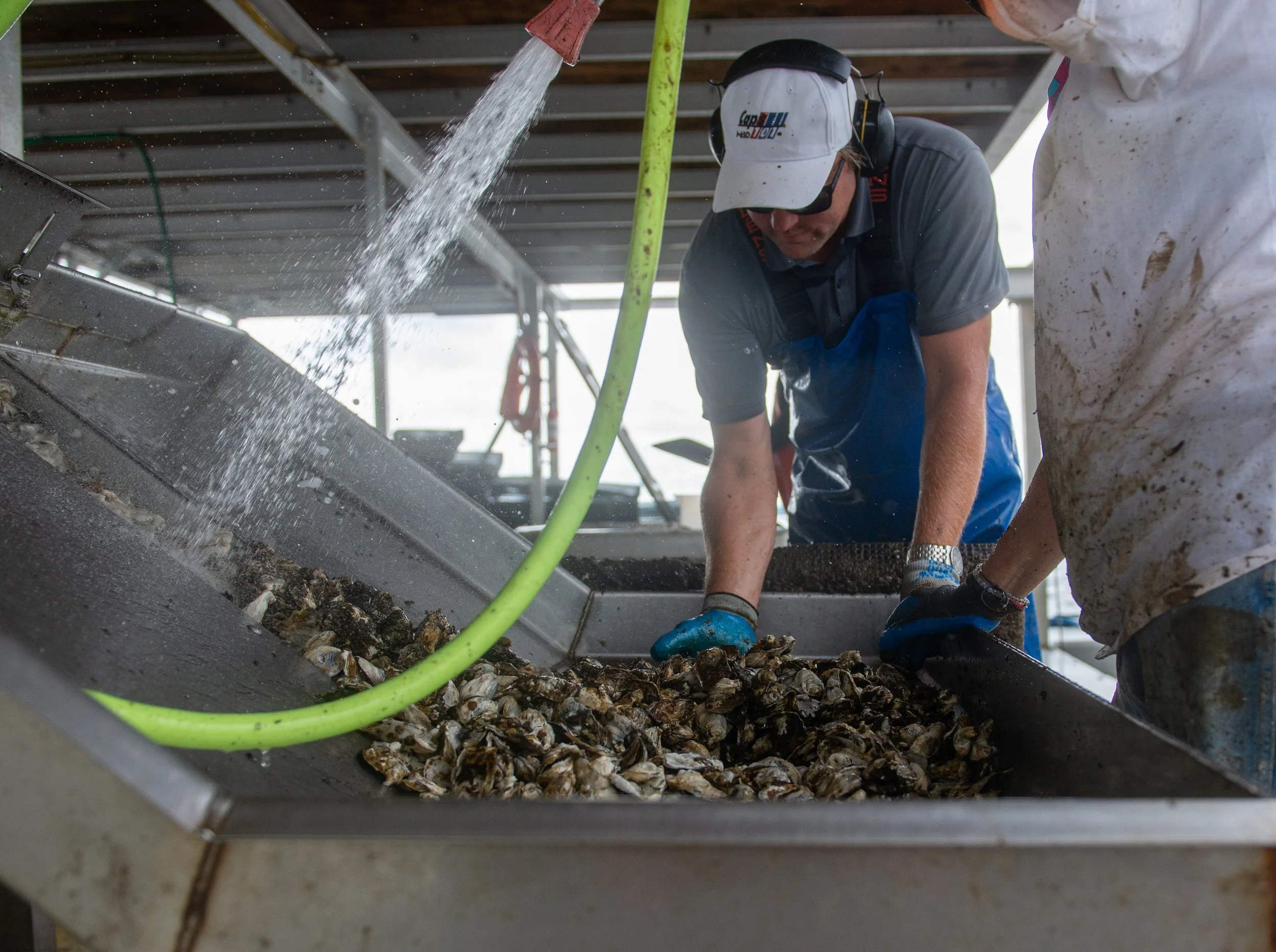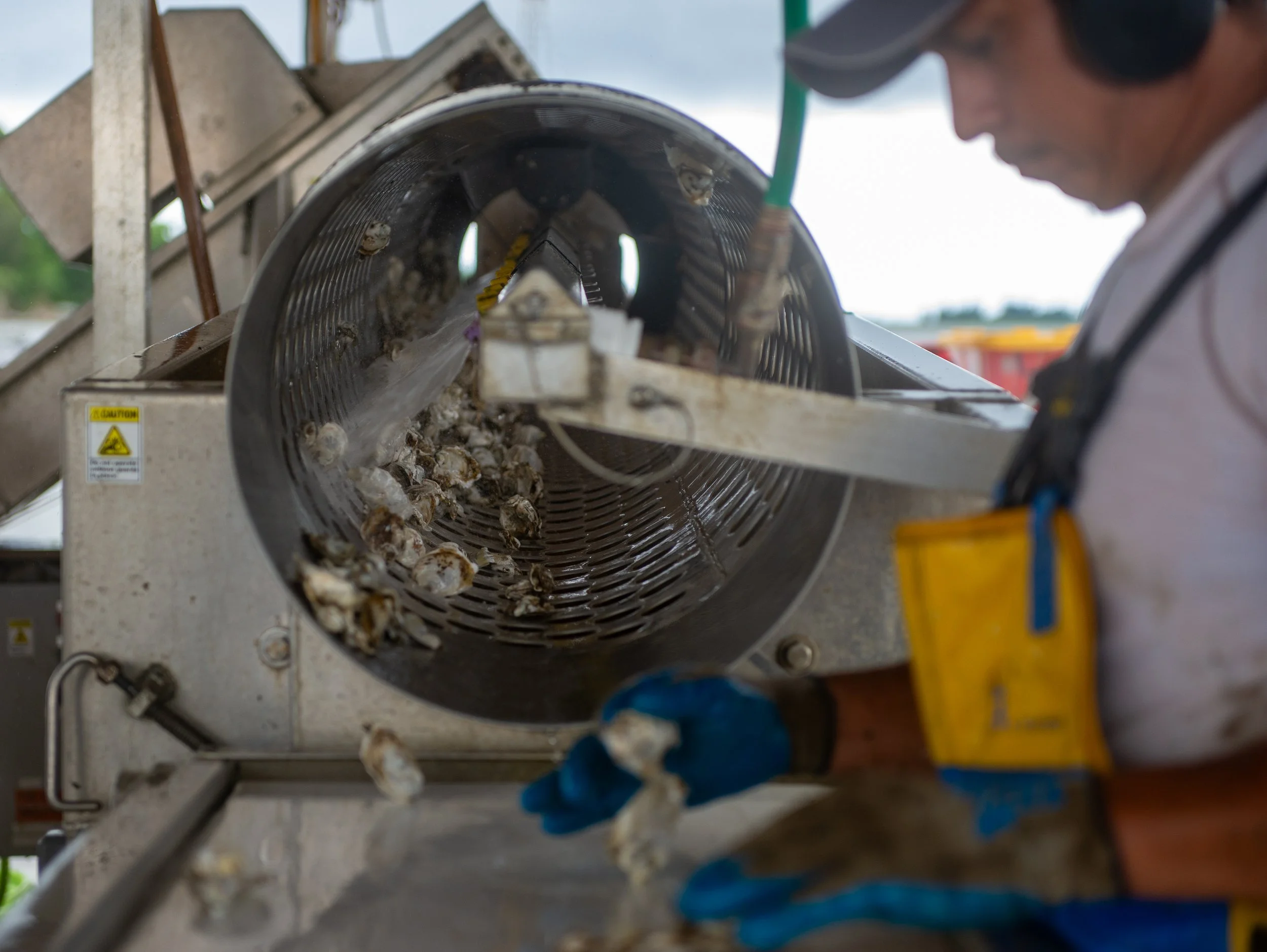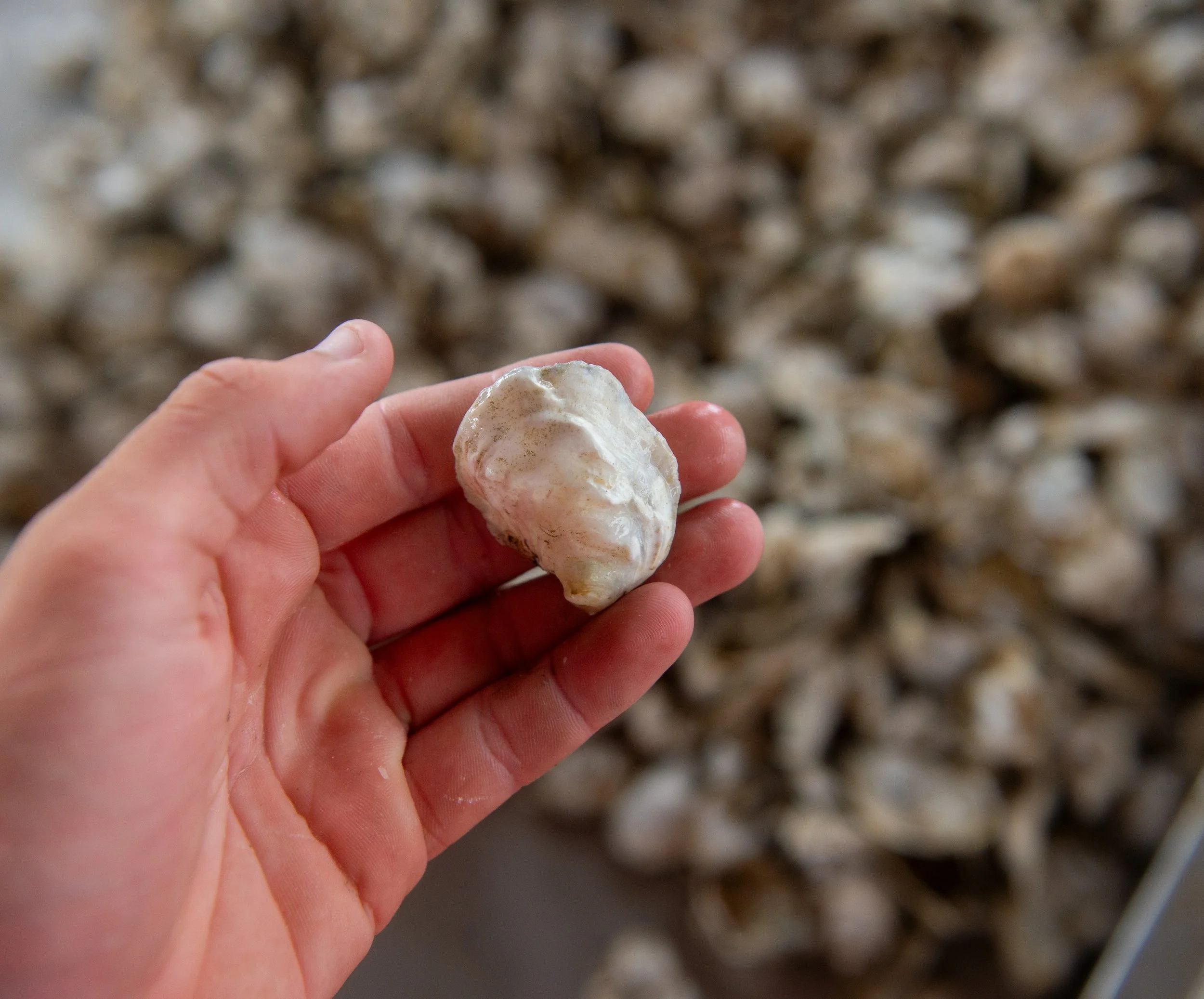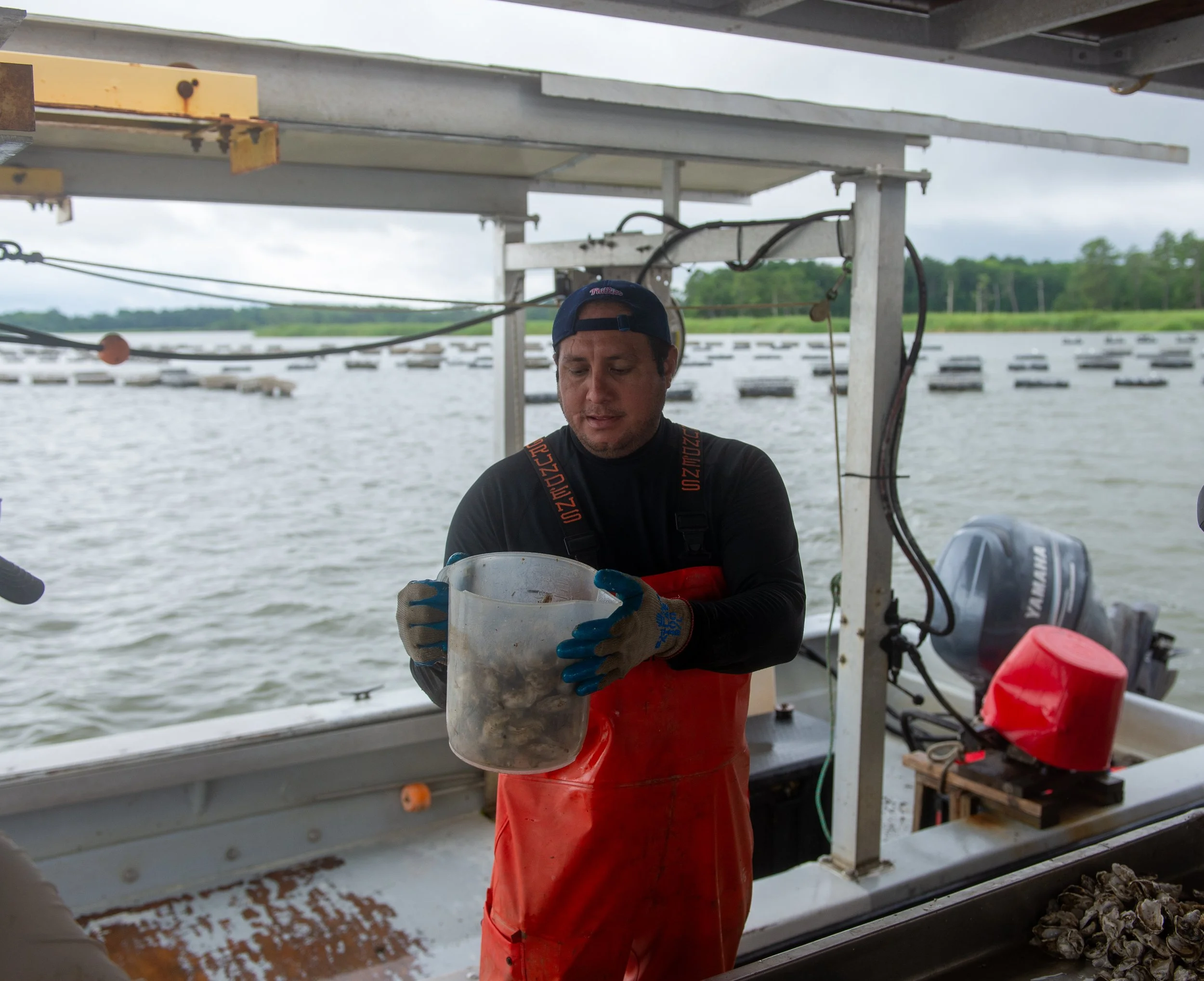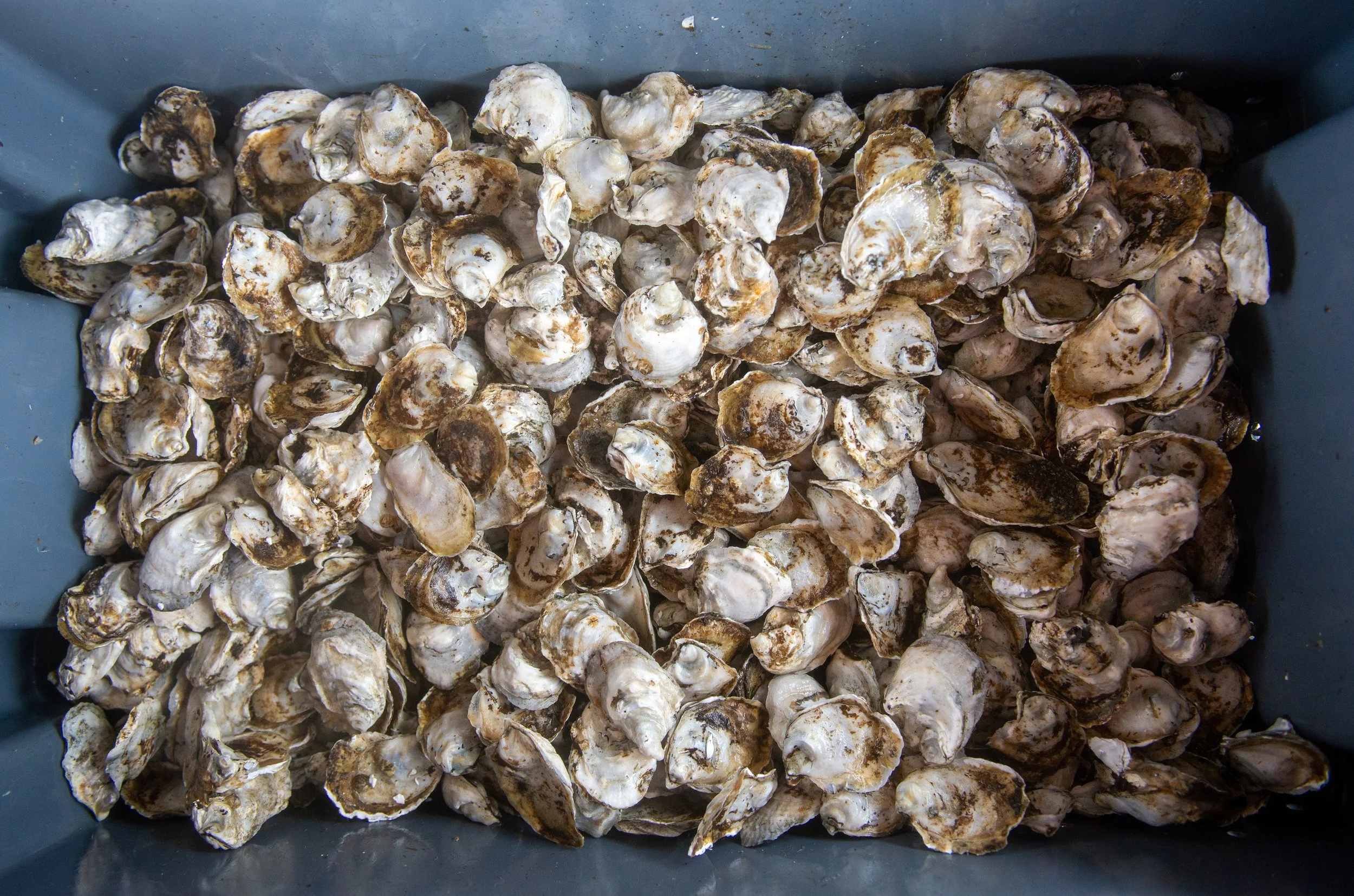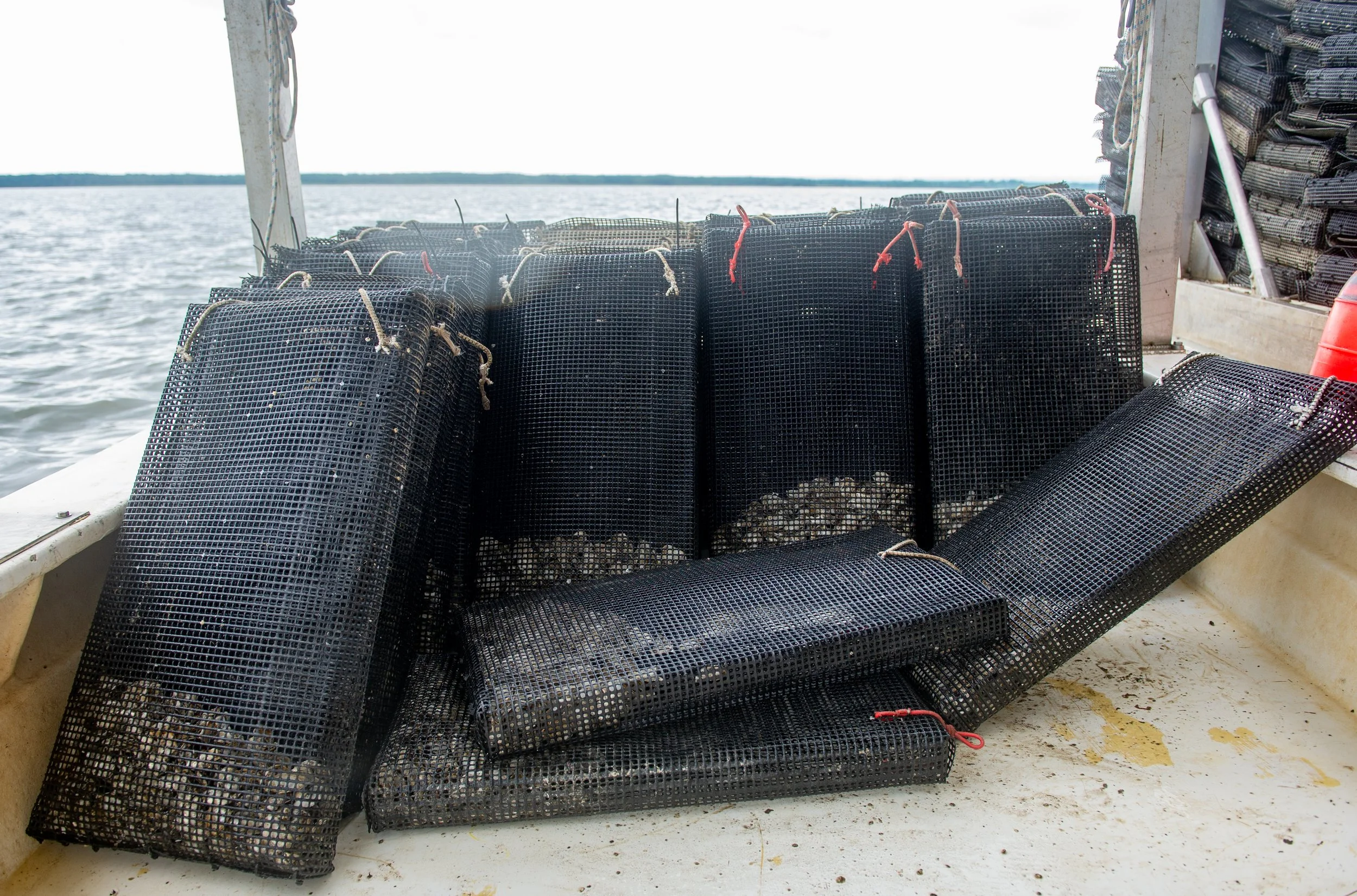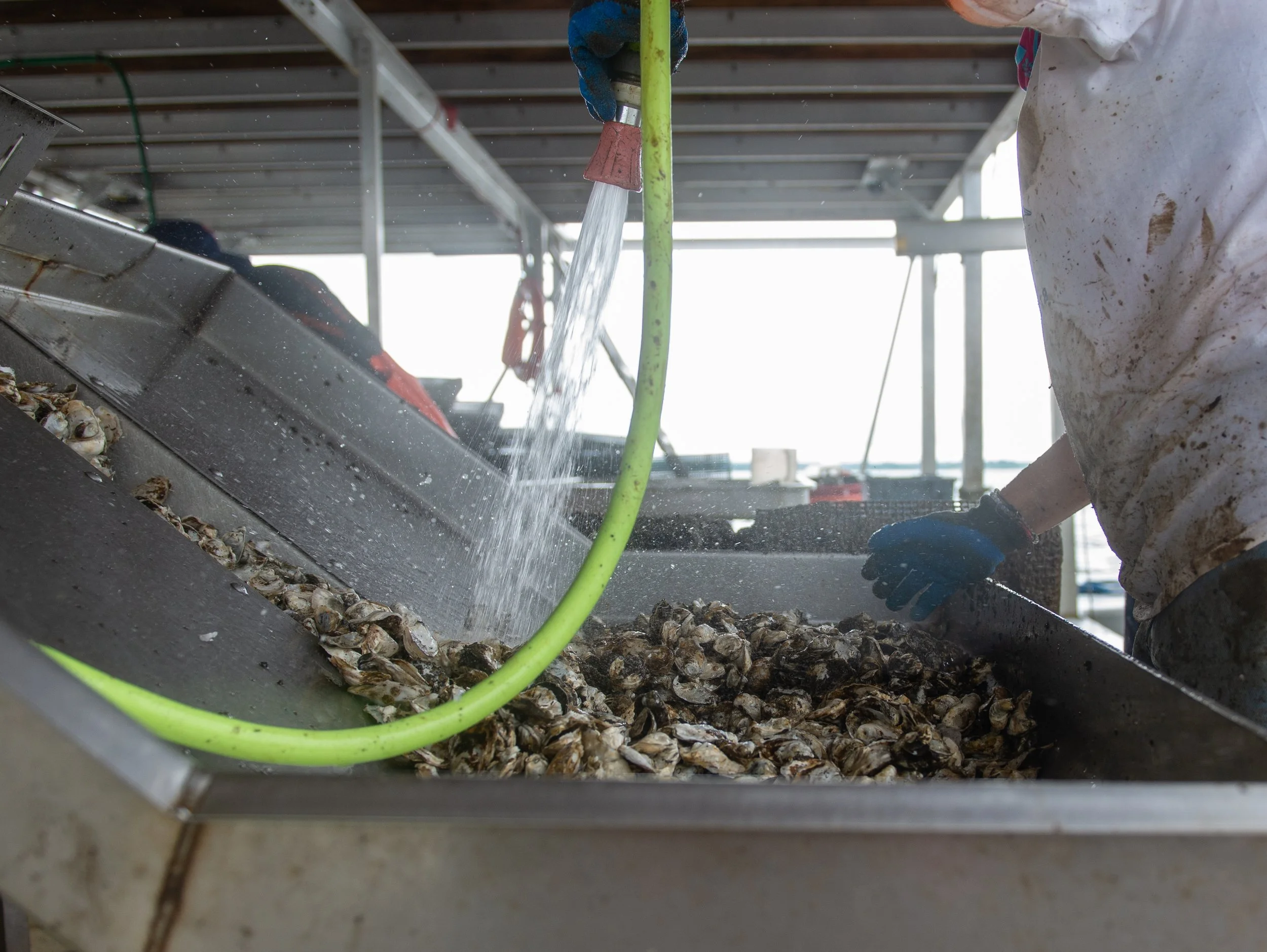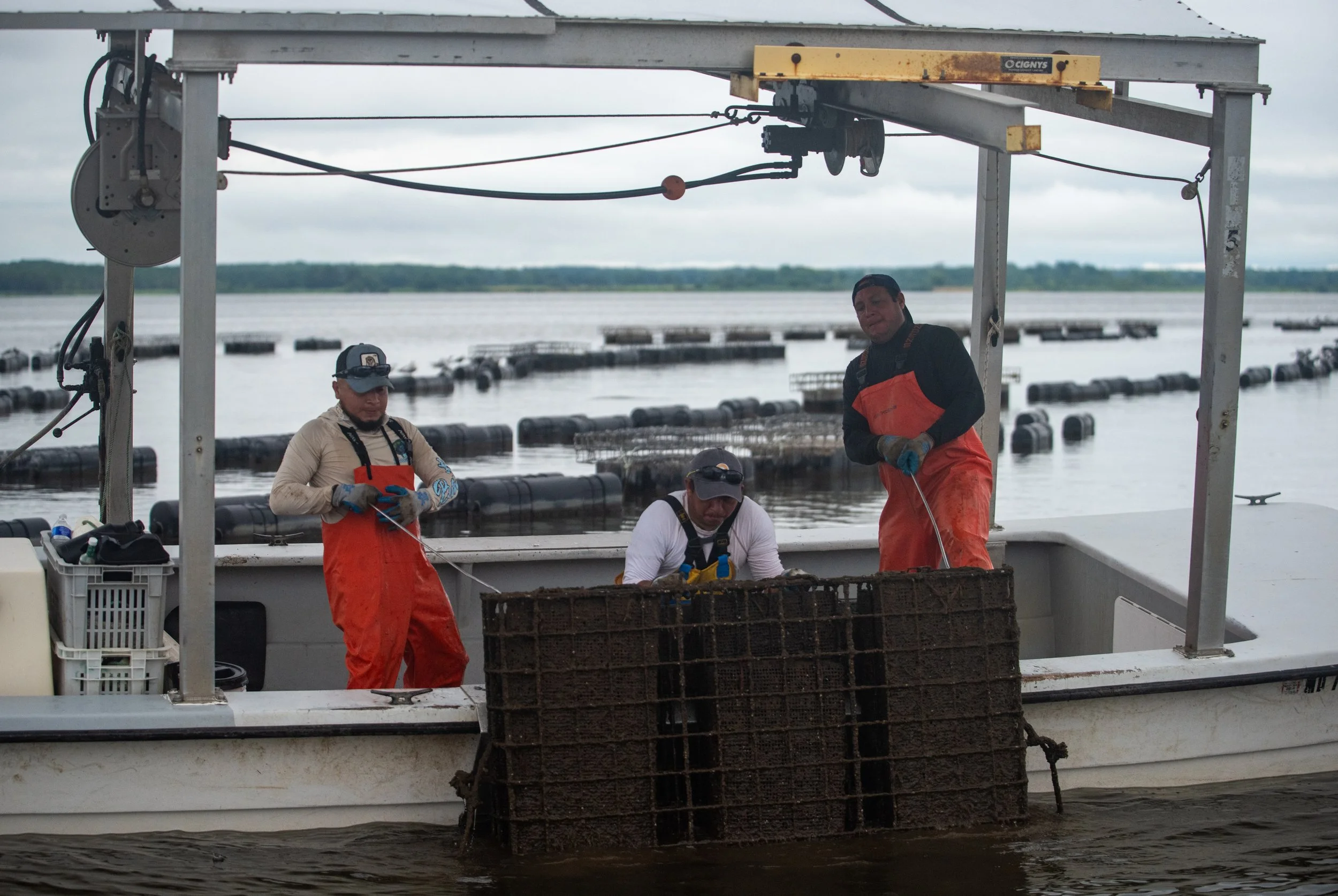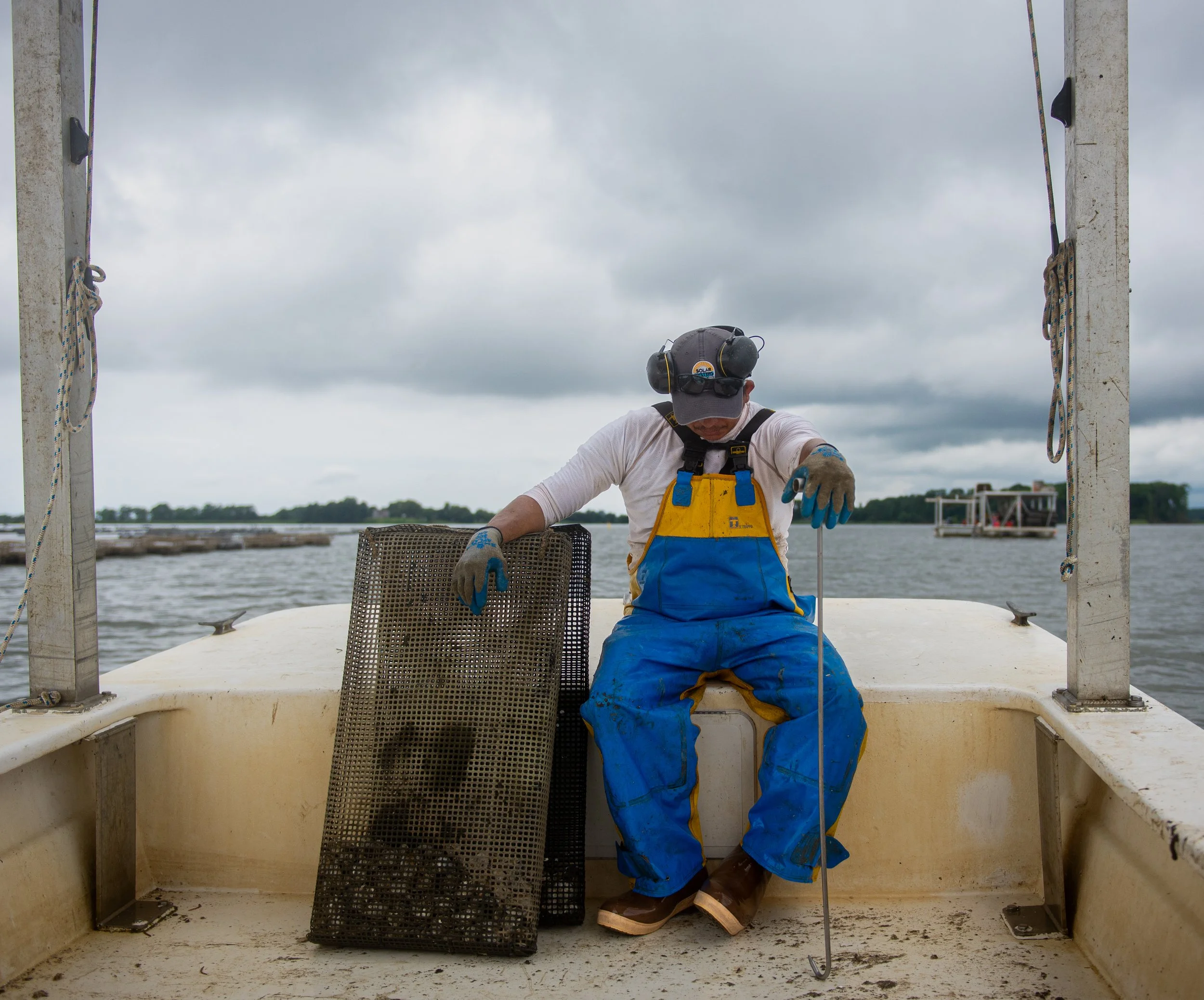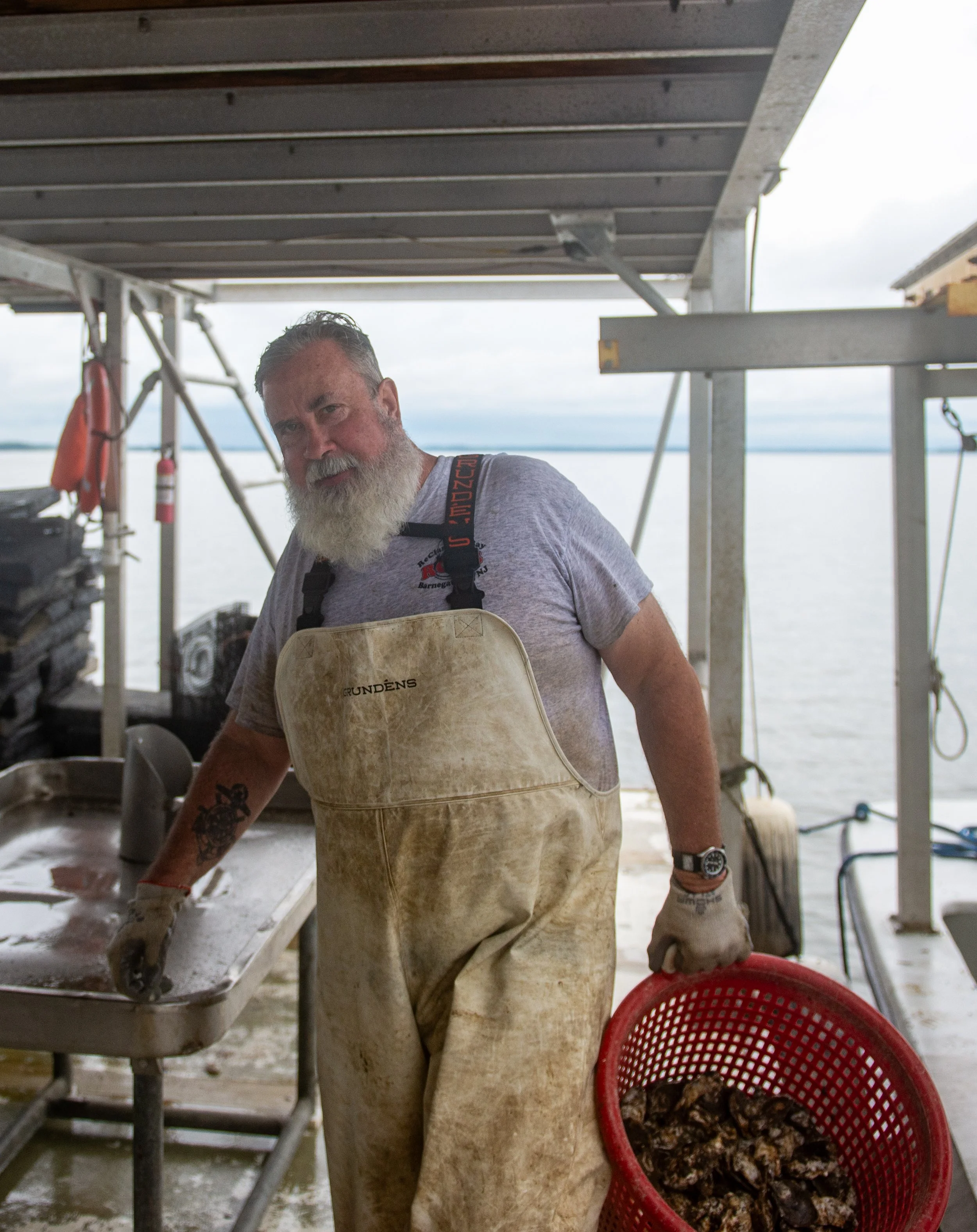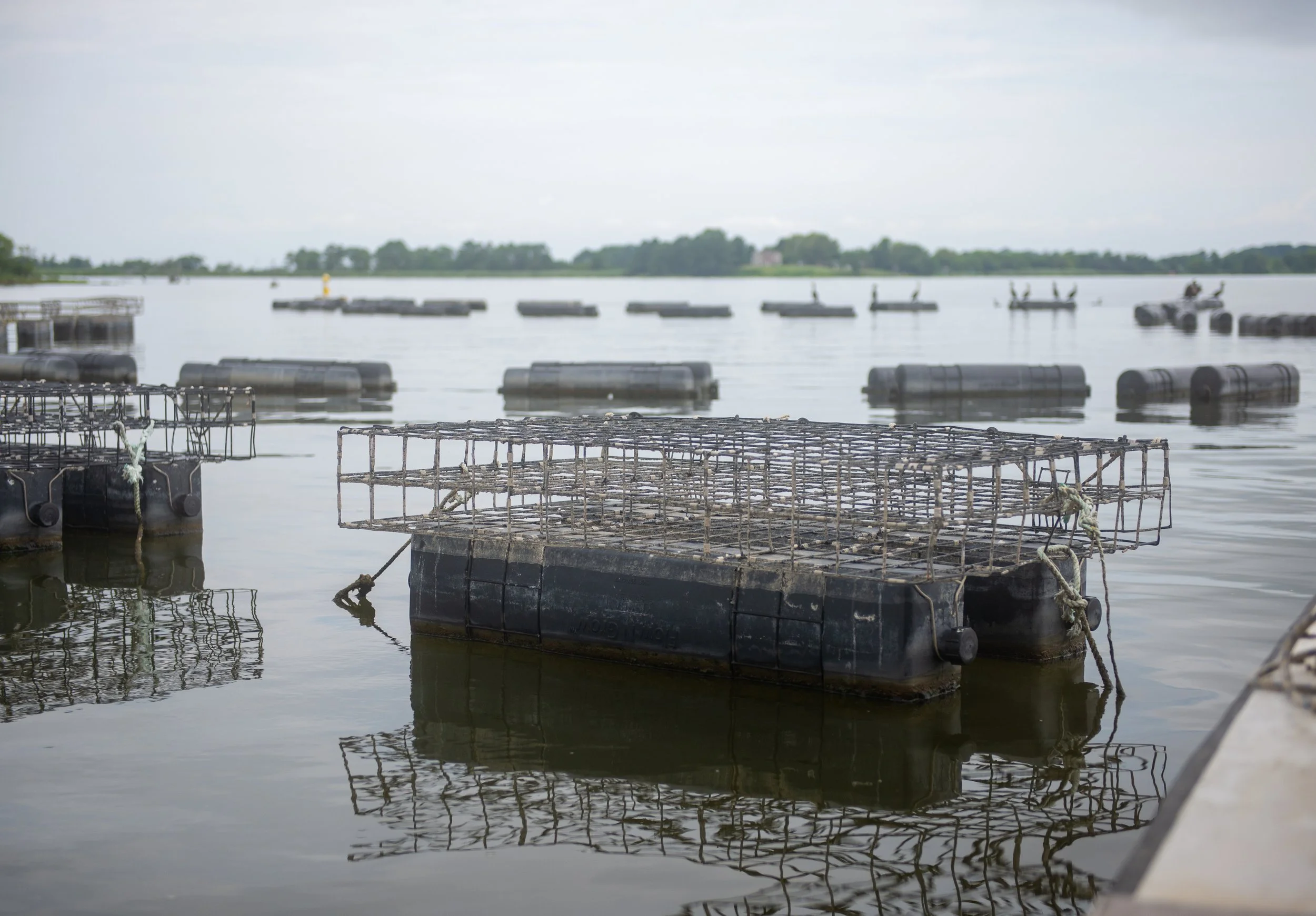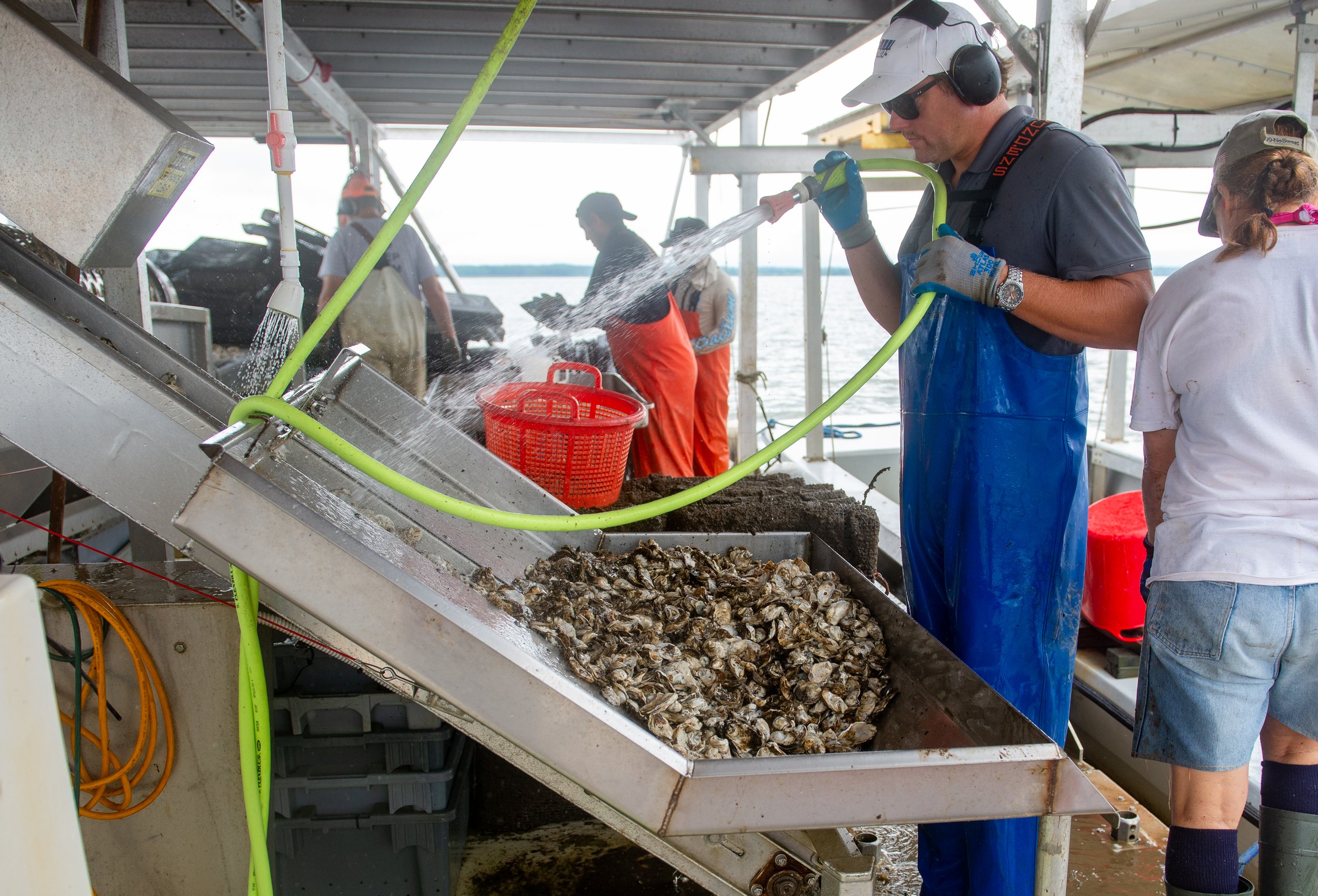
Aquaculture
Aquaculture is an oyster harvesting method involving growing oysters from seed rather than relying solely on natural, preexisting oyster reefs. Unlike traditional harvesting, which removes oysters from the wild, aquaculture adds oysters to the water, enhancing the ecosystem by providing critical habitat and naturally filtering the water column as the oysters grow.
Most aquaculture farms grow a genetically modified variety of oyster known as a triploid rather than a natural wild oyster that’s known as a Diploid. These oysters are engineered to be sterile, which prevents reproduction but promotes rapid growth and consistent meat quality. This innovation allows farmers to produce market-size oysters more quickly and reliably, boosting both sustainability and profitability.
Importantly, oyster aquaculture contributes to a net gain in oyster populations in the bay. Instead of depleting the resource, farmers are actively adding oysters that will be harvested later, making this a regenerative practice. As a result, aquaculture not only supports local economies but also plays a vital role in restoring oyster populations, improving water quality, and enhancing biodiversity in coastal ecosystems.
The oysters are grown from a small seed. To ensure proper growth and protection, the seeds are started in an upweller system on land. This takes water from a creek and pumps it through a tank that holds the oysters. Once the oysters reach a certain size, they are moved to a floating upweller that is basically a floating dock that pumps nutrient rich water through the boxes with the seed. After those oysters have developed to a size that fits in the mesh bags, they are moved out into the floating cages on the river. These floating cages are more suitable for better growth because they are in more open water with a greater tidal flow, meaning more current and circulation. The cages also experience more wave action, which acts as a natural tumbler, helping to clean the shells and shape the oysters.
A prime oyster desired by restaurants and oyster bars typically has a deep cup and a clean, well-formed shell. Left on their own, oysters naturally tend to develop wide and flat shells. When left to grow on the bottom, especially in crowded conditions or on soft, muddy substrate, oysters spread out horizontally to compete for space, resulting in those flatter shapes. To produce a more marketable oyster with a deeper cup, farmers tumble the oysters. This process involves rolling the oysters in a tumbler, which chips off the new shell growth along the edges. By removing these outer growth points, the oyster is encouraged to grow vertically rather than horizontally, forming a deeper cup. Tumbling also helps clean the shell by removing mud, barnacles, and other fouling organisms, resulting in a cleaner appearance that enhances the oyster’s appeal at raw bars and in restaurants.
Check out some photographs from a day spent on The Orchard Point Oyster Aquaculture Lease on the Chester River.
https://www.orchardpointoysters.com/
https://www.instagram.com/reel/C-WPPgGsGXJ/?utm_source=ig_web_copy_link
This Upweller bin contains half a million Oyster Seeds - As a reference, you can fit around 5-10 of these on your fingernail.
1/4 of a million Oyster seeds in this Upweller bucket. One of these is about the size of your pinky fingernail.
Dawson Hunter holding a handful of oyster seeds
Sorting and cleaning seed in the Upweller system
These are the Bags that the Oysters go into on the water. The size of the mesh is the largest possible to allow the most waterflow without letting the oysters out.
The Oyster Barge. This is the main station on the water, all the equipment needed is on the barge.
One of the smaller skiffs used to collect the bags of oysters from the floating cages.
When the oyster come out of the Cages they are pretty dirty and have lots of growth, by spraying them off they can get most of the muck off.
The oysters travel up this belt and fall into the tumbler.
This tumbler has different sized holes that allow the oysters to be sorted by size. It also chips off any new growth, this forces the oyster to grow deeper rather than wider.
Measuring how many oysters to put into the bags in order to maximize the space to growth ratio.
Doing a final sorting of the oysters by size and shape
Bags with freshly sorted oysters ready to go back into the floating cages.
Pulling the cages up onto the Skiff.
The floating cages





